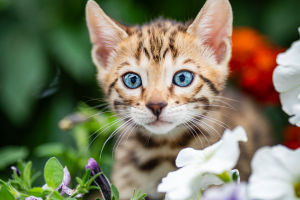Ardea alba, commonly known as the Great Egret, is a majestic bird that belongs to the family Ardeidae.
This species is widely distributed across the world, inhabiting various wetland habitats such as marshes, swamps, and shallow coastal areas.
Now, we will explore the physical characteristics, behavior, habitat, and conservation status of Ardea alba.
1. Physical Characteristics
The Great Egret is a large bird, measuring around 100-140 cm in length with a wingspan of 140-170 cm. It weighs around 1-2 kg.
It has a slender body, long neck, and long legs, which are adapted for wading through shallow water. The Great Egret has white plumage, with a yellow bill and black legs.
During the breeding season, the adults develop long, wispy feathers on their backs, which are used for courtship displays.
2. Behavior
Ardea alba is a solitary bird, but it may gather in small groups during the breeding season. It is a diurnal bird, meaning that it is active during the day and rests at night.
The Great Egret feeds on fish, frogs, insects, and small animals that it catches while wading through shallow water.
It is a skilled hunter, using its long neck to strike at prey with lightning-fast speed.
3. Habitat
The Great Egret is found in wetland habitats across the world, including North and South America, Europe, Africa, and Asia.
It prefers shallow water bodies such as marshes, swamps, and shallow coastal areas. It also inhabits rice paddies, grasslands, and forests near water bodies.
4. Conservation Status
Ardea alba is listed as a species of "Least Concern" by the International Union for Conservation of Nature (IUCN).
However, the population of this species has declined in some regions due to habitat loss, pollution, and hunting.
In some areas, the Great Egret is also threatened by the construction of dams, which can alter the natural flow of water and affect the availability of food.
To conserve Ardea alba, it is important to protect wetland habitats and ensure that they are not degraded by human activities such as urbanization, agriculture, and industry.
The use of pesticides and other chemicals in agriculture should also be minimized to prevent the contamination of water bodies.
Hunting and poaching of Great Egrets should be strictly prohibited, and laws should be enacted to protect this species.
Ardea alba is a magnificent bird that plays an important role in wetland ecosystems. It is a skilled hunter and a symbol of grace and beauty.
By conserving its habitat and protecting it from human activities, we can ensure that this species continues to thrive in the wild.


